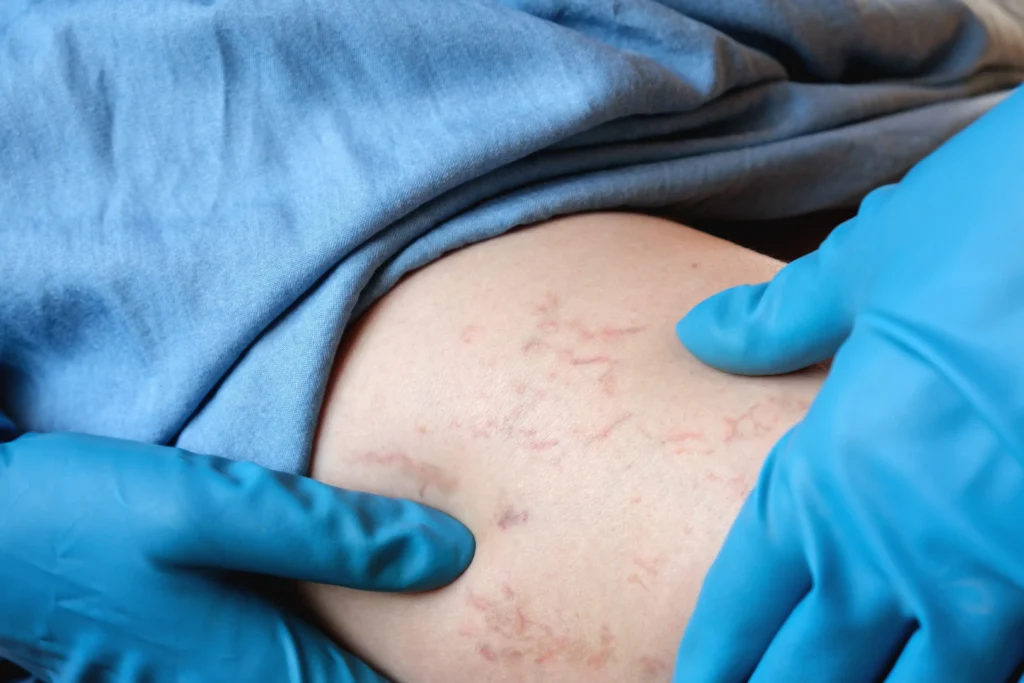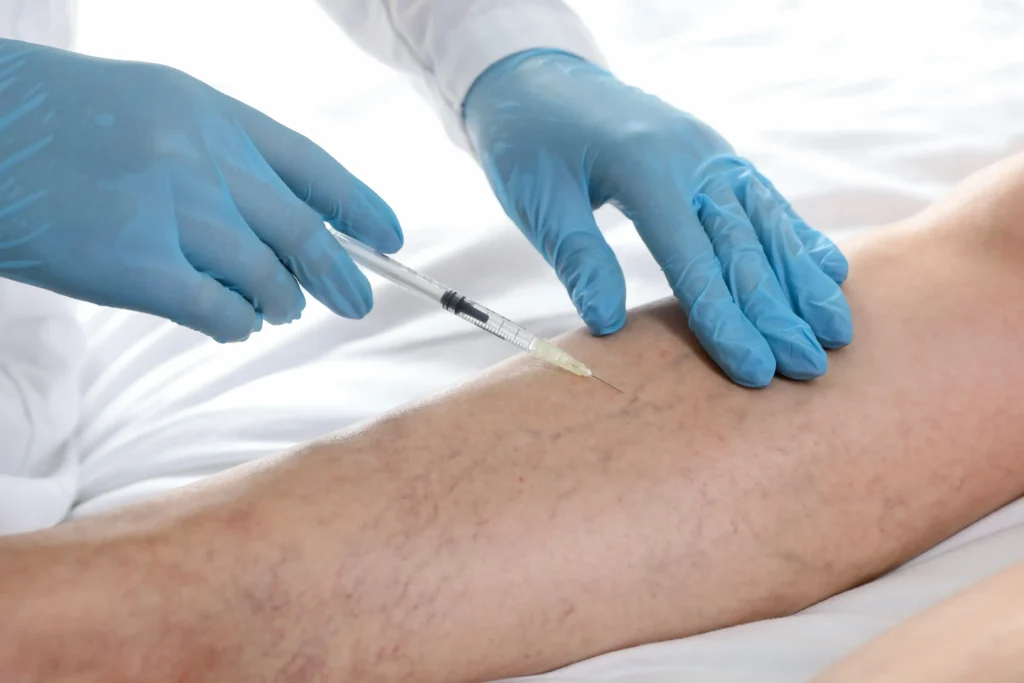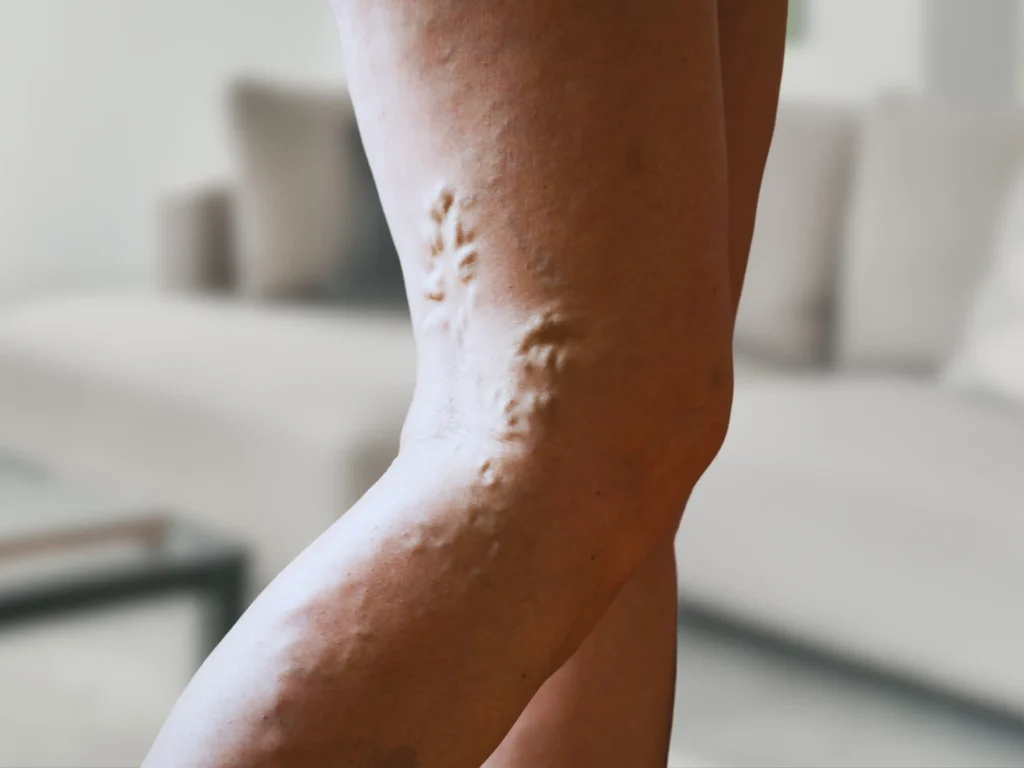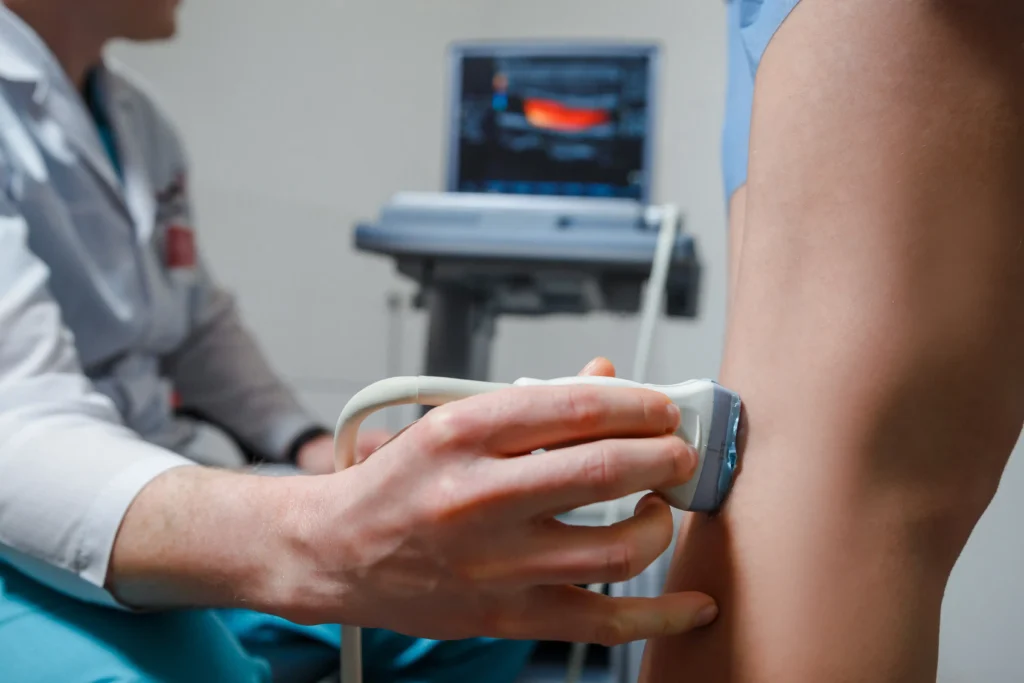Say goodbye to chronic venous insufficiency in Cedar Park, TX
Summary:
Chronic venous insufficiency in Cedar Park is a treatable condition that leads to leg swelling, heaviness, and varicose veins if ignored. At our Cedar Park vein clinic, patients receive advanced ultrasound-guided care and minimally invasive procedures. With Ivy League–trained vein doctors, expert treatment restores circulation, relieves symptoms, and prevents long-term complications.
What is chronic venous insufficiency?
Chronic venous insufficiency (CVI) occurs when the valves in the veins of the legs weaken and stop moving blood efficiently back to the heart. Instead, blood flows backward, pools in the legs, and raises venous pressure.
This can lead to:
- Swelling in the legs and ankles
- Heaviness or fatigue in the legs
- Bulging, visible varicose veins
Who is most at risk of developing chronic venous insufficiency?
CVI can affect anyone, but some people are more likely to develop it. Risk factors include:
- Being over 40
- Family history of vein disease
- Pregnancy and hormonal changes
- Jobs with long hours of standing or sitting
- Obesity or excess weight
If you notice early signs like spider veins, swelling, or night cramps, schedule a consultation with Dr. Shane Volney, a board-certified vein specialist in Cedar Park.
What are the symptoms of chronic venous insufficiency?
The main symptoms of chronic venous insufficiency (CVI) include leg swelling and heaviness, skin changes with discomfort, and visible varicose veins. Each sign can affect daily life if left untreated.
How do I recognize leg swelling and heaviness?
Persistent swelling around the ankles or lower legs is often the first symptom. Patients usually describe their legs as heavy or tired, especially after standing for long periods.
What skin changes and discomfort should I watch for?
CVI can cause itching, burning, or throbbing sensations. Over time, skin may become discolored, thickened, or develop ulcers if the condition is ignored.
Why are visible varicose veins a warning sign?
Bulging, twisted veins are a hallmark of CVI. They may be painful or tender and can interfere with mobility, comfort, and confidence.
How is chronic venous insufficiency diagnosed?
Chronic venous insufficiency is diagnosed with a duplex ultrasound. This safe, noninvasive test shows how blood flows in your leg veins and identifies reflux, or backward flow.
Why is an ultrasound important for diagnosis?
Ultrasound allows vein doctors to map out which veins are malfunctioning. It provides a clear picture of valve performance and blood circulation.
How does early diagnosis help patients?
By detecting reflux early, doctors can design a personalized treatment plan. This prevents the condition from worsening and reduces the risk of long-term complications such as ulcers or skin damage.
What treatments are available for chronic venous insufficiency?
Minimally invasive procedures are the best treatments for chronic venous insufficiency. They are quick, safe, do not require surgery, and allow most patients to return to daily activities the same day.
Each treatment plan depends on ultrasound results, since every case is different.
How do I know if I need radiofrequency ablation (RFA)?
RFA is often recommended when large veins show reflux. It uses controlled heat to close faulty veins and reroute blood flow.
How do I know if I need endovenous laser ablation (EVLA)?
EVLA may be chosen when refluxing veins respond best to laser energy. A thin laser fiber seals the diseased vein and restores circulation.
How do I know if I need sclerotherapy?
Sclerotherapy is best for small varicose or spider veins. A solution is injected into the vein, making it collapse and fade.
What are the benefits of early treatment for chronic venous insufficiency?
Early treatment prevents complications, improves quality of life, and enhances appearance.
How does early care prevent complications?
It reduces the risk of ulcers, infections, and long-term skin damage.
How does treatment improve quality of life?
It relieves swelling, restores comfort, and helps patients sleep better.
How does treatment enhance appearance?
It reduces varicose veins and skin discoloration, boosting confidence.
Where can I get treated for chronic venous insufficiency in Cedar Park?
You can get treated at our Vein Treatment Clinic in Cedar Park by trusted vein specialists such as Dr. Shane Volney. Our doctors use advanced, minimally invasive treatments to restore circulation and relieve symptoms.
Why should I choose the Cedar Park vein clinic for treatment?
Because we have board-certified doctors, a convenient location, treatments that address the root cause of vein disease, and insurance coverage for most medically necessary procedures.
At our Cedar Park vein clinic, patients receive full evaluations and customized care plans.
📍 Address: 351 Cypress Creek Road, Suite 200, Cedar Park, TX 78613
📞 Phone: 512-807-6742
🕒 Hours: Mon–Fri, 9:00am – 7:00pm
View us on Google Maps
Why do patients recommend Dr. Shane Volney?
Patients recommend Dr. Shane Volney because he is “extremely professional, accommodating, and caring,” with an “amazing bedside manner” and “detailed explanations.” Reviews note that he “listens to concerns” and “actually cares about patient well-being.”
FAQ about chronic venous insufficiency
Is chronic venous insufficiency dangerous?
CVI is not life-threatening, but it can lead to ulcers, infections, and permanent skin changes if left untreated.
How long does recovery take after treatment?
Most patients walk out of the clinic and return to normal routines the same day.
Does insurance cover treatment for CVI?
Yes. Most insurance plans cover treatment when symptoms such as pain or swelling are documented. Cosmetic-only care may not qualify.
Can chronic venous insufficiency come back?
Treated veins do not return, but new problem veins may appear. Regular follow-ups help maintain circulation.






